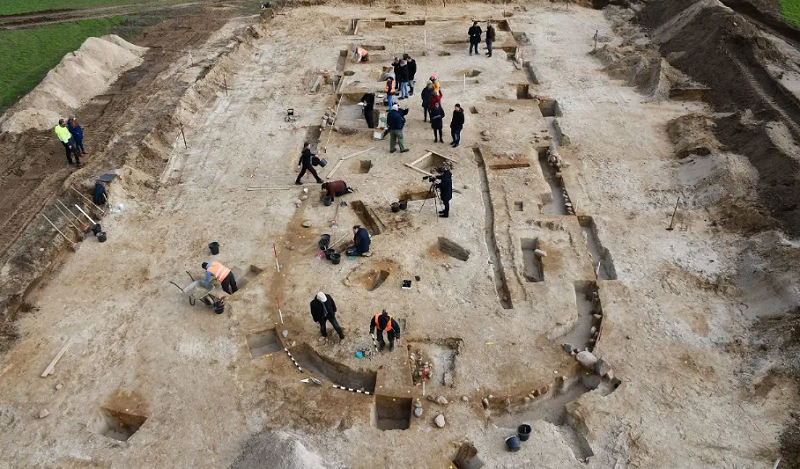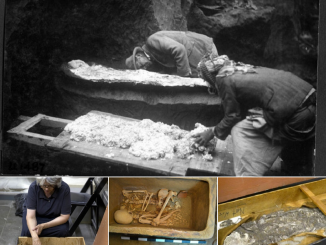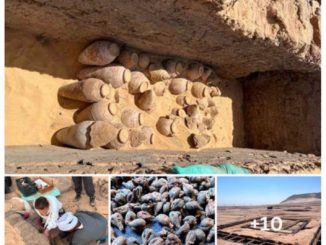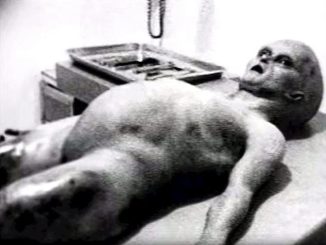Archaeologists have uncovered a large meeting hall near the Bronze Age burial mound of King Hinz, also known as the “King’s Grave”, located in Seddiner in northwestern Brandenburg, Germany.
The “King’s Grave” is considered as the most significant burial site from the 9th century BC in northern Central Europe. It was discovered in 1899 during stone extraction work,
Since spring 2023, archaeologists have conducted extensive excavations around the royal burial mound, with the Brandenburg State Office for Monument Preservation collaborating with archaeologists from the University of Göttingen.
The hall measures 31 by 10 meters and dates from the 9th to 10th century BC. According to the researchers, the discovery is “unique for the Bronze Age – a find of Germany-wide, if not Europe-wide, significance.”
Dr. Immo Heske from the University of Göttingen, said: “ This is the largest building of its kind. We only know of four buildings from this era over a period of 1000 years that are this wide.”
Archaeologists suggest that the structure was used as a meeting hall by King Hinz, a legendary figure who ruled in Prignitz, however, very little is known about this monarch except that he was reputed to have been buried in a coffin made from gold.
The hall was originally up to 7-metres tall and was built using wooden planks covered in a wattle of clay plaster. Due to the building’s considerable height, the researchers suggest that the structure likely accommodated multiple levels. Excavations also revealed a centrally positioned fireplace and a miniature vessel that may have been used for ceremonial purposes.
Tobias Dünow from the Brandenburg State Secretary for Science, said: “Here we have the opportunity – like hardly anywhere else in Europe – to gain an insight into the way of life, the culture, the building of houses and to get the burial culture in the Bronze Age.”




